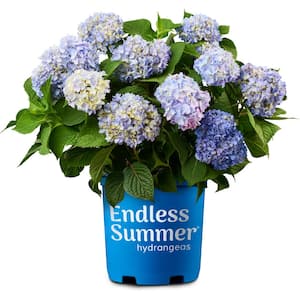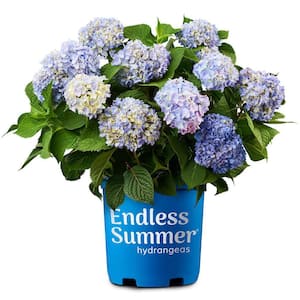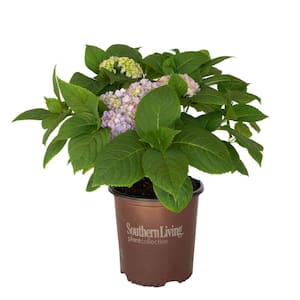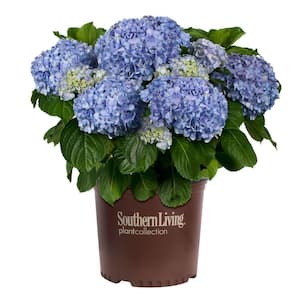Questions and Answers for Endless Summer 1 Gal. The Original Reblooming Hydrangea Flowering Shrub with Pink or Blue Flowers
- Low maintenance reblooming Hydrangea, pink or blue blooms
- Plant deciduous perennial in morning sun, afternoon shade
- Ships at 8 in. & can grow to 5 ft. when mature; Hardy Zones 4-9
Questions & Answers
8Questions
Q:Do you have to deadhead the spent blooms throughout the growing season, or just at the end of the season?
by|Apr 10, 2021
3 Answers
Q:What is the best fertilizer for Hydrangea??
by|Jul 1, 2020
2 Answers
Q:Will they grow in direct sun (unshaded) areas as well?
by|Mar 31, 2020
2 Answers
Q:I planed a number of these along the side of my property about 2.5 months ago & they typically get sunlight from 7 am till noon/1 before the house casts a shadow on the area. I’ve noticed that on the leaves black areas have started to appear & some have burned out... I checked for insects & haven’t noticed any. Does anyone know what could be causing this?
by|Jul 27, 2019
2 Answers
Q:What color bloom will I receive?
by|Jul 8, 2017
2 Answers
Q:R the hydrangea in home depot stores in Ft Lauderdale Florida or Boca Raton Florida.
by|Jun 19, 2016
1 Answer
Q:3 out of the 4 shrubs keep wilting at the end of the day. One of them gets full sun from 10 am - 6 pm and it's doing well.
I've been watering the other three wilted ones in the evening and they perk back up but by the next afternoon they're wilting again. They get sun from 12 noon - 6 pm, and there was a sign at Home Depot with these shrubs that said they need 6 full hours of sunlight. If someone has advice on how I can get these to grow, I would appreciate it.
by|May 24, 2016
2 Answers
Q:Just wondering if they have to be put into the ground or if they can flourish in a pot? Could I keep them in the plastic container I purchased them in instead of emptying the container and planting in a pot?
by|May 22, 2016
2 Answers



























